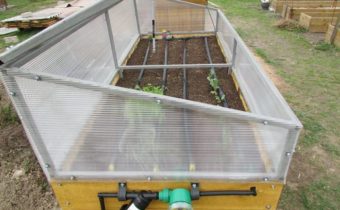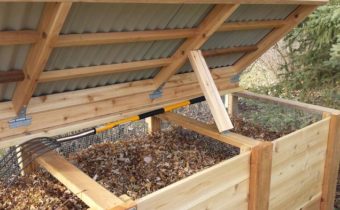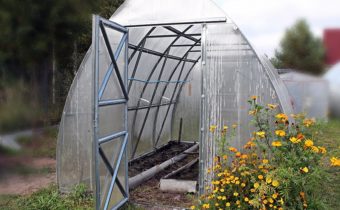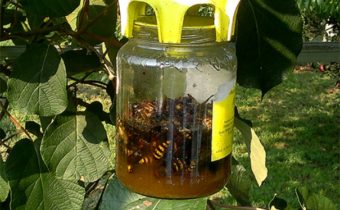We build a compost box in the country
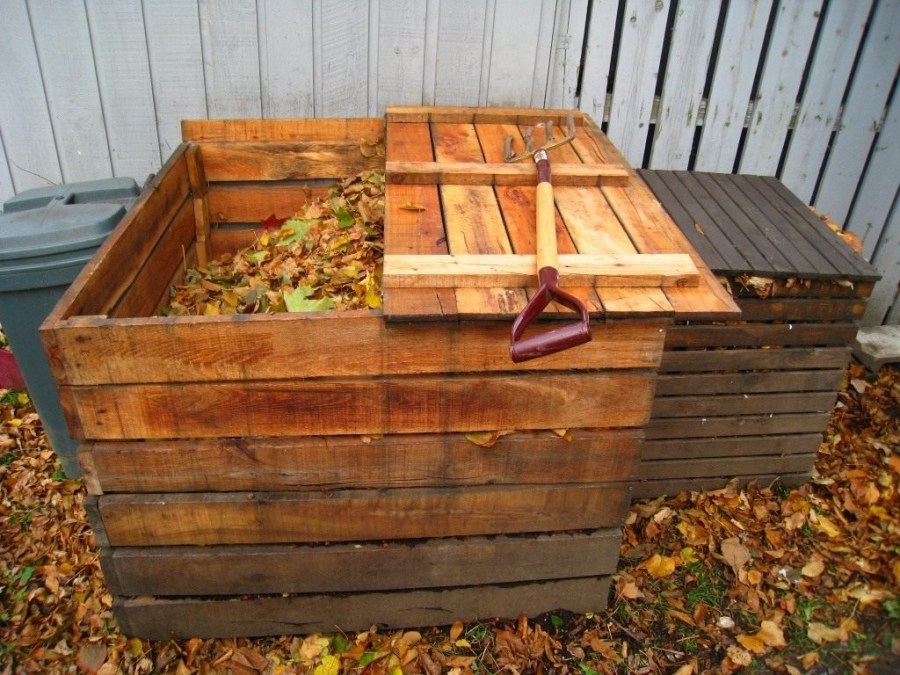
To increase the yield of the garden and garden land is required to enrich with useful substances. The most affordable and effective fertilizer is compost fertilizer, which is independently organized by summer residents.
To build a practical compost box in the country with your own hands, no special carpentry skills and expensive materials are required.
What is the compost box for?
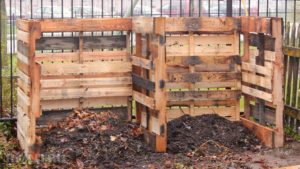 Compost is a fertilizer fertilizer that is formed as a result of the natural decay of organic waste. Garden organic materials are tops, fallen leaves, mowed grass, mulch, hay, manure, decaying or small vegetables, peel, as well as scraps and cleaning from your table. All this can be used to lay the compost feed. Some summer residents use for this purpose a pit or a heap into which they collect various components. The compost box is much more convenient and functional.
Compost is a fertilizer fertilizer that is formed as a result of the natural decay of organic waste. Garden organic materials are tops, fallen leaves, mowed grass, mulch, hay, manure, decaying or small vegetables, peel, as well as scraps and cleaning from your table. All this can be used to lay the compost feed. Some summer residents use for this purpose a pit or a heap into which they collect various components. The compost box is much more convenient and functional.
The design for the organization of compost fertilizer in the form of a box has the following advantages:
- neat appearance;
- easy organic bookmarks;
- shelter organization;
- possibility of high-quality strait;
- air access.
For the complete overheating of the compost, an important condition is access to oxygen and humidity in organic matter. This creates a favorable breeding ground for bacteria that recycle organic ingredients.
If you have a cub or barrel, you can use it for filling with organic waste. Take care of the oxygen supply to the contents.
At the site as a tank for compost feeding, you can install a tank of metal, plastic or other materials. They need to drill holes for air supply. In the absence of suitable tanks, you can build a box under the bookmark yourself.
Wrong compost, typical mistakes
To get strong bushes of tomatoes and a rich harvest, it is advised to use compost. This is a natural fertilizer, ...
Requirements for the box
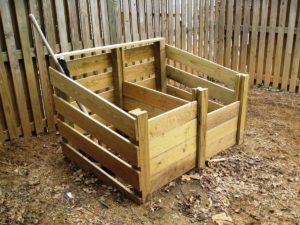 Composters for giving can be made of any materials. The structure should have openings for air flow and a cover for closing. As a closing element it is possible to use dense polyethylene, which is required to press down along the perimeter. Covering material is necessary to prevent precipitation from entering the compost - snow or rainwater. Excessive hydration reduces the usefulness of feeding, slows down the process of overheating, adversely affects the vital activity of bacteria.
Composters for giving can be made of any materials. The structure should have openings for air flow and a cover for closing. As a closing element it is possible to use dense polyethylene, which is required to press down along the perimeter. Covering material is necessary to prevent precipitation from entering the compost - snow or rainwater. Excessive hydration reduces the usefulness of feeding, slows down the process of overheating, adversely affects the vital activity of bacteria.
The size of the box should not exceed one meter, since it is difficult to lay the components through the high walls. Due to the fact that the lower layers of the compost dressing ripen earlier, it is necessary to provide access to them. The most convenient design with removable segments.
What materials to use
For the construction of the cottage composter, you can use any materials available. The main load will be carried by the frame, which can be built from thick planks, timber, pipe profile. Side walls sewn up:
- boards;
- slate;
- sheet metal;
- polycarbonate;
- dense polyethylene;
- plywood or chipboard, etc.
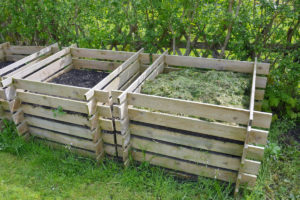 The most popular material for building a compost box is wood. This can be unplaned board, slab, thick plywood, etc. Wood elements are easy to install, they are environmentally friendly and affordable.
The most popular material for building a compost box is wood. This can be unplaned board, slab, thick plywood, etc. Wood elements are easy to install, they are environmentally friendly and affordable.
For work, you will need a shovel for digging holes for the racks, fasteners for assembling walls and, if necessary, accessories for mounting boards, doors, and sashes. The material is attached to the frame on the screws or nails with a screwdriver or a hammer. Structural elements are prepared for a certain size with the help of building roulettes and sawed off with a hacksaw, grinder or jigsaw.
Types of designs
The botva, foliage, mowed grass is rich in nitrogen and phosphorus. When using ready-made compost from garden waste, you will get an environmentally friendly harvest without using ready-made store dressings.
Country composters can be classified by the number of compartments.
Solitary
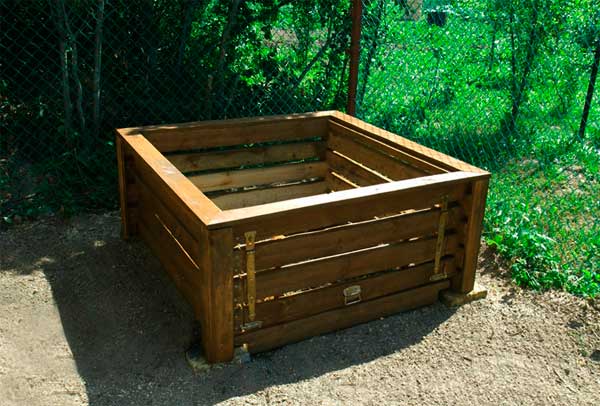 You can build a large single box that will fill during the entire summer season. It is also possible to build a long box broken down into several compartments. Single structures are built in different parts of the garden and they collect waste that is located most closely;
You can build a large single box that will fill during the entire summer season. It is also possible to build a long box broken down into several compartments. Single structures are built in different parts of the garden and they collect waste that is located most closely;
With several departments
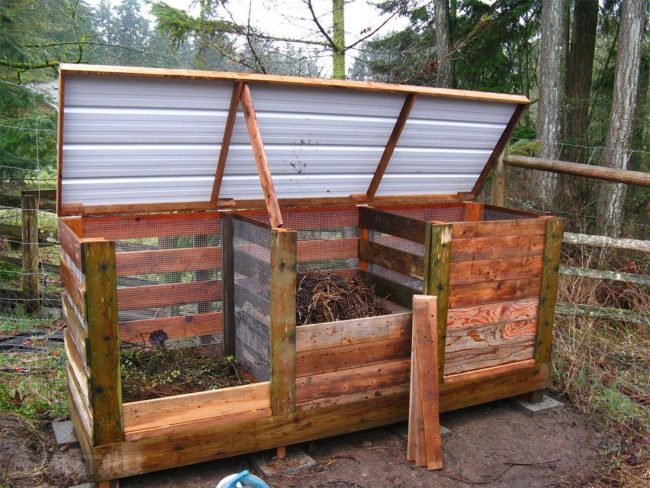 In the composting plant with 3-4 compartments, you can organize several bookmarks at once, which can be created according to the type of stored waste. For example, beet or carrot tops turn into a full feed in 6 months, and it will take at least two years to rot the bushes of potatoes or tomatoes.
In the composting plant with 3-4 compartments, you can organize several bookmarks at once, which can be created according to the type of stored waste. For example, beet or carrot tops turn into a full feed in 6 months, and it will take at least two years to rot the bushes of potatoes or tomatoes.
If the area is small, one large box is enough, where you will place all the organic matter that can be rotten.
It is easy to assemble a compost box from pallets. Sturdy structures are lattice walls that will reliably hold organics.
Compost preparation facilities may also differ in the way of fixing the walls. You can remove the boards by unscrewing the screws or remove them from a specially constructed slot. It is also convenient to make one of the walls in the form of vertically opening doors on ordinary door hinges. Doors themselves are fixed in the middle of the wall on the crossbar, located horizontally. Fixation is carried out with a latch or heck. If necessary, get the compost open the lower sash and remove the fertilizer with a fork. The upper compost layers are moved down, and you can bookmark again.
Placement of the composter on the plot
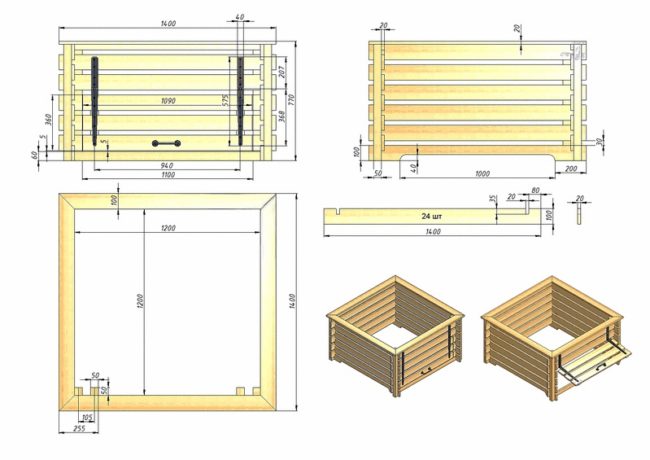 For the construction of the compost structure itself, a plot should be selected at a distance from the residential building. The process of decay of organic matter is accompanied by the release of unpleasant odors. It is also better to place the composter in close proximity to the places of accumulation of waste, that is, near the beds and fields. On a large plot you can put from 2 boxes in different corners.
For the construction of the compost structure itself, a plot should be selected at a distance from the residential building. The process of decay of organic matter is accompanied by the release of unpleasant odors. It is also better to place the composter in close proximity to the places of accumulation of waste, that is, near the beds and fields. On a large plot you can put from 2 boxes in different corners.
It should also be considered that a source for irrigation is available from the compost structure. Compost needs to be watered periodically so that the organic components rot and create a favorable environment for the reproduction of microorganisms. It is better to build a box in a sunny place. The more the pile heats up, the more intense the decomposition of organic matter will take place.
The main stages of assembling the box
To assemble the box under the compost with your own hands, prepare all the necessary materials and tools. For convenience, make a sketch of the erected structure on paper. This will help you to calculate the number and size of everything you need, to consider ways of fixing elements.
Compost is a natural and affordable fertilizer for vegetable crops. In terms of nutrient content, it equates to ...
Phased construction of the box:
- Select a plot under the composter.
- Saw the material for the supports of the future composting. The height of the bars should not exceed 100 cm.For a ramp drawer, the rear pillars are 20 cm longer than the front.
- Dig in racks. To do this, use a shovel to dig holes 30-40 cm deep. Dip the planks or boards into the holes, set them vertically and tamp the excavated earth.
- Measure the distance between the supports. The depth of the box should be no more than 150 cm. The width of each compartment should not exceed 100 cm. Prepare the appropriate materials for plating. Solid walls provide perforations for air flow.
- Mount the inner and outer walls. If you plan to make removable elements, pre-install the mechanisms and devices for fastening. Fasten latches and latches, if provided for by the construction.
- Install the lid on the box according to its size.
The three sides of the compost box and the wall of the compartments can be constructed without the possibility of opening. It is advisable to make the front wall of the box detachable. Composting is done through the upper section. The seizure is carried out from the lower section through a removable or opening segment.
To increase the life of the compost box, it is recommended that all internal wooden elements be treated with antiseptic deep penetration compounds. This will prevent rotting and wood damage.
At the end of the work, the outer walls of the box can be painted with paint or stain to give the building an attractive appearance. Effectively conduct two staining steps. The second layer of paint is applied after complete drying of the previous composition.

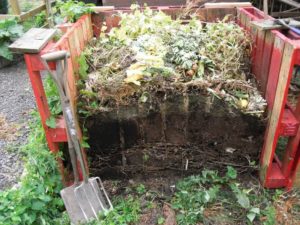
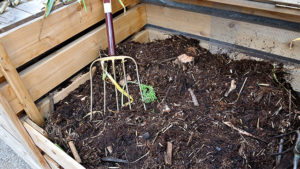

 (1 ratings, average: 4,00 from 5)
(1 ratings, average: 4,00 from 5)